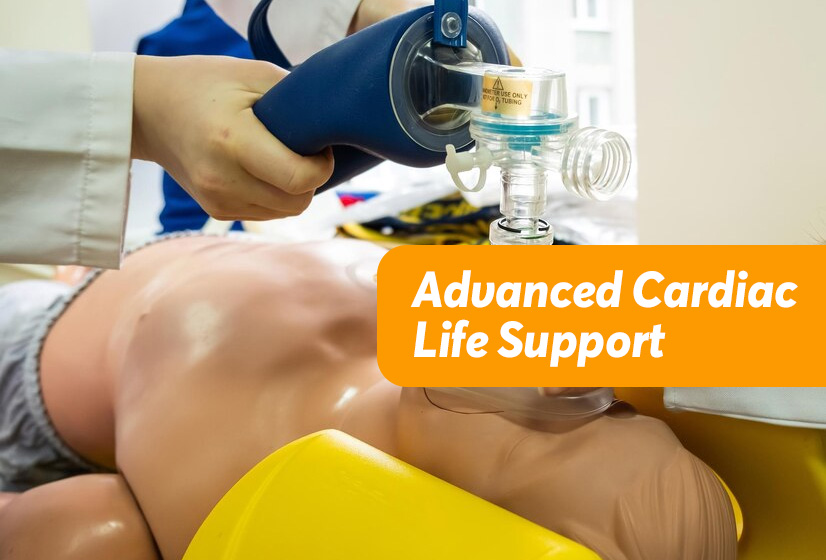Introduction
Basic life support, advanced cardiac life support and post heart arrest care are set of skills and knowledge. With the help of these skills the helper can save the life. These skills use sequentially according to the condition of patient. The basic goal of advanced cardiac life support is to get the best way to save life. It is the level between basic life support and post heart arrest care. The trainers suggest taking its training of both pre hospital and in hospital medical care. There are differences in heart arrest. That is in hospital heart arrest and out of hospital heart arrest. The methods of both heart arrests are different. Due to this factor the trainings of both methods are important. The guidelines of this method change after five year cycle. The latest update of this standard published in 2015. Its standard develops under clinical studies, case studies and expert’s opinions.
The Initial Assessment
It is necessary to check the patient is conscious or unconscious. If the patient is in distress condition then lay down him in a place and call out. Make sure the area is safe for conducting BLS or ACLS. If the patient is unconscious then start with BLS. Then gradually move to ACLS. If the patient is conscious then start directly with ACLS method.
The helper is always being in full proactive mode. It is important to provide suitable technique to save life. It requires rapid and fit assessment of the patient’s condition. It is not only the duty of helper to assess the patient in distress. It has the duty to assess the patient throughout the treatment. It is not important to take all information from the patient for treatment. It is also not compulsory to use all the methods properly. There are many issues on which the helper cannot use such methods. In this scenario the helper has to give the best possible care. The standard develops on past and result in some cases. Although it is important to give best possible method to save life.
Airway Management
If bag mask airing is fit then the helpers use this method for airway. The helpers want to use the best method for airway in this skill. It is also a technique to balance the airway. The basic airway apparatus consists of orpharyngeal airway and nasopharyngeal airway. In orpharyngeal airway method the device places in the mouth. And in nasopharyngeal airway method the device inserts in nose. The main advantage of NPA is that it is easy for patient to use. The advanced airway devices include the laryngeal mask airway, laryngeal tube, esophageal-tracheal tube and endotracheal tube. There are different styles of these supraglottic airways. If it is within your scope of practice then you may use advanced airway devices when suitable and available.
Basic Airway Adjuncts
Orpharyngeal Airway (OPA)
The OPA is a j-shaped device that fits over the tongue. It holds the soft hypo pharyngeal structures and the tongue away from the next wall of the pharynx. It is fit for the patient who has hurdle in airway from the tongue side. A proper use of this device gives better results in setting of glottis. This device uses on unconscious patient. It does not try to use in a conscious or semiconscious patient. It can disturb the patient. The patient may do vomiting and aspiration. It only use on the patient who is suffering in unconscious.
Step 1
Clear the mouth of blood or secretions with suction, if possible.
Step 2
Select an airway device that is the correct size for the person.
- Too large of an airway device can damage the throat.
- An airway device that is too small can press the tongue into the airway.
Step 3
Place the device at the side of the patient’s face. Choose the device that extends from the corner of the mouth to the earlobe.
Step 4
Insert the device into the mouth so the point is toward the roof of the mouth or parallel to the teeth.
- Do not press the tongue back into the throat.
Step 5
Once the device fully inserts then turn it. The tongue will be cupped by the device’s interior curve.
Nasopharyngeal Airway (Npa)
The NPA is a soft rubber or plastic uncuffed tube. It provides a tube for airflow between the nares and the pharynx. It is an alternative to an OPA. It helps to give a basic airway help. It is opposite to OPA. It uses on conscious or semiconscious patients. It uses when OPA is technically difficult or dangerous. It places with the help of lubricant. There is no need to place it with force. It may harm in shape of nose bleeding. Try to fix it properly.
Step 1
Select an airway device that is the correct size for the patient.
Step 2
Place the device at the side of the patient’s face. Choose the device that extends from the tip of the nose to the earlobe. Use the largest diameter device that will fit.
Step 3
Lubricate the airway with a water-soluble lubricant or anesthetic jelly.
Step 4
Insert the device into the nostril slowly, moving straight into the face (not towards the brain).
Step 5
It should feel snug; do not force the device. If it feels stuck, remove it and try the other nostril.
Suctioning
Suctioning has a main role in maintaining airway. The helpers use this method to set the airway. This method uses when the patient is bleeding or vomiting. During this process it should not exceed 10 seconds. It is better to follow this method for short period to avoid any other issue. Keep an eye on patient’s heart rate and oxygen level during this method. If there is change on patient heart rate then stop it. Try to set the oxygen level until the heart rate returns to normal.
Tips on Suctioning
- Do not insert the catheter too deeply for suctioning of pharynx. Extend the catheter to the maximum safe depth and suction as you withdraw.
- Keep in mind the tube is within the trachea when suctioning an endotracheal tube. It may be suctioning near the bronchi or lung.
- Each suction attempt should be for no longer than 10 seconds. Remember the person will not get oxygen during suctioning.
- Monitor vital signs during suctioning. Stop suctioning if the person feels hypoxemia (oxygen sets less than 94%). It has a new arrhythmia or it becomes cyanotic.
Advanced Airway Adjuncts
Endotracheal Tube
The endotracheal (ET) tube is an advanced airway alternative. It is a specific type of tracheal tube. It inserts through the mouth or nose. Technically it is the most difficult airway to place. It is the most secure airway method. Only trained helpers should perform ET intubation. This technique requires the use of a laryngoscope. Fiber optic portable laryngoscopes have a video screen. It helps in improve success and is gaining popularity for field use.
Laryngeal Mask Airway
The laryngeal mask airway (LMA) is an advanced airway alternative to ET. It provides similar airing. It is acceptable to use the LMA as an alternative for airway management in heart arrest. The experience will allow quick placement of the LMA device by an ACLS helper.
Laryngeal Tube
The advantages of the laryngeal tube are similar to those of the esophageal-tracheal tube. The laryngeal tube is more compact and less complicated to insert. This tube has only one larger balloon to inflate. It inserts blindly as well.
Esophageal-Tracheal Tube
The esophageal-tracheal tube is an advanced airway alternative to ET intubation. It provides suitable airing similar to an ET tube. It has two separate balloons. These balloons inflate and then use. There are two separate ports also. The helper must know the port to use for better air passing.



